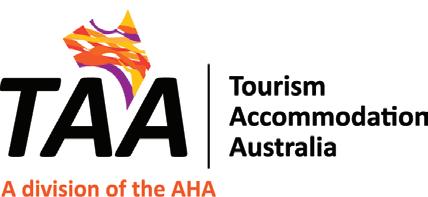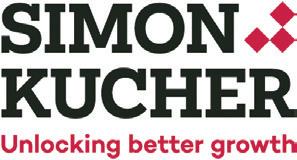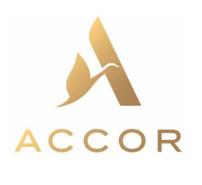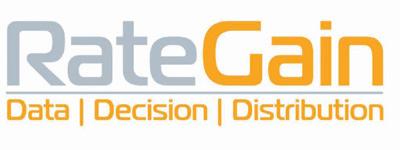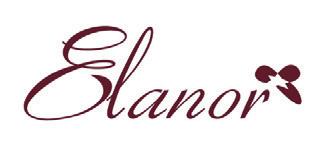Top
Mastering Contribution Margins
Sales: What are you missing out on



Top
Mastering Contribution Margins
Sales: What are you missing out on


It is an absolute delight to share this issue with you and welcome you to Unstoppable!
RM Magazine features insightful content from our much-valued partners who all share extremely useful insights.
All Summits since their inception in 2016 have delivered tangible revenue outcomes for many attendees and partners post the event, with a strong focus on education to drive profitable results.
We are delighted to have the continued support of the Accommodation Association and Tourism Accommodation Australia, both long-standing industry supporters of ARMA and our education initiatives, and are excited to have Michael Johnson update us regarding the amalgamation.
This event would not be possible without all of our exceptional partners but especially our Platinum Partners: Expedia Group, Duetto, Oracle Hospitality and IDeaS Revenue Solutions.
This year, our Summit is themed “Unstoppable”, which signifies the resilience and adaptability of the travel industry in the face of challenges. We are delighted to have gathered revenue management experts, industry leaders, and international professionals to share their experiences and insights with us.
In addition to our theme, we have several exciting industry initiatives to share with you this year. We launched a Student Symposium and Revenue Management Challenge, which provides a platform for aspiring revenue management professionals to showcase their skills and learn from industry experts. Thank you to our Symposium partner Booking.com.
Finally, we are thrilled to announce our tourism employee awards event, “Celebrate YOU” which recognises outstanding industry talent and encourages industry to nominate their peers for their hard work and dedication. With the support of industry and our corporate partners, this event provides reward credits for the shortlist and winners (with the help of our Reward Partner, Accor) that they can use towards training and mentoring.
The Australian Revenue Management Association (ARMA) is a professional association that focuses
on upskilling the accommodation industry in revenue and yield management.
The purpose of ARMA is to provide education, resources, and networking opportunities to help industry professionals develop the skills and knowledge needed to maximise revenue and profit potential.
By promoting best practices and providing ongoing training and support, ARMA is helping to raise the standard of revenue management across the industry. Through its core focus on upskilling, ARMA is empowering accommodation operators to make datadriven decisions that drive growth and success in an increasingly competitive marketplace.
Core to the association is the ARMA Professional Membership Framework which facilitates the professional growth and development of both emerging and experienced revenue management professionals, enabling them to make well-informed decisions about their career trajectories. This program is designed to assist individuals in identifying the competencies they need to acquire as they advance through various stages of their career.
I’d like to take this opportunity to thank our ever-expanding ARMA community of trained professionals, our corporate and industry members, and congratulate those that have achieved Affiliate, Associate, or Fellow status under the ARMA Professional Membership Framework.
As always, thank you for your support.
Melissa Kalan Founder and Chief Executive Australian Revenue Management Association
The commoditisation of Australian hotel products is currently at its peak. If guests’ book via travel portals or Online Travel Agencies (OTAs), the direct comparison of identical offers no longer shows the subtle or significant differences between hotels. Apart from the price, the offers are barely distinguishable.
In the current model, rooms are priced as units and rates are determined by demand and availability. OTAs then display these rooms in a side-by-side, competitive marketplace format where little information is provided about any of the unique qualities each unique room or property may offer.
For instance, if you’re shopping for a king room at a five-star hotel in Noosa, a guest comes across three similar listings, they’ll most likely opt for the lowest-priced option. What the booking channel can’t tell the guest is that there’s an available room with stunning sunset views that would really make their sunshine coast vacation an unforgettable experience… if only the guest knew.
Today’s hotel guests may appear to be fixated on price, but really, they want more than just a place to sleep, and whatever it is they desire, they want the highest quality version of it they can afford. Cost will always matter, of course, but hotels can start to reposition price as just one factor of the overall decision. For example, does the guest want a balcony, a view, a breakfast? These are all wishes and preferences that are often prioritised ahead of the price.
With personalised pricing, each guest would be given more options in the online booking environment. They can select the individual components of a room they want and leave off the

ones they don’t, either spending extra or getting a cheaper rate in the process.
By implementing personalised pricing, hotels can separate and categorise all their products and services into components of value. Features that are currently invisible during booking could now be brought to the surface as part of the decision-making process. This will help drive differentiation, meaning there will be less emphasis on direct price comparison with competitor products being marketed as the same thing, despite their many differences.
Through a personalised approach to pricing, hotels can dynamically price any component based on the customer’s needs. This not only helps hoteliers monetise the guest experience, but also increases the choice and level of personalisation to support guest comfort and satisfaction.



Historically, revenue management professionals have worked hard to create room pricing strategies that meet their hotels’ commercial goals and provide a guest-friendly price point, but the revenue management strategies have traditionally stopped when guests confirm their reservations.
So what happens after that reservation confirmation comes through? Few hotels extend any pricing strategy to upselling across the guest journey. For years, determining what upsell offer to present and how to price them was ad hoc and primarily completed at the front desk because upselling functionality on digital channels was rudimentary. There was no way to understand upsell demand, meaning there was no way to forecast upsell revenue.
The price difference between the booked room and the upgraded room is a static pricing mechanism with no intelligence behind it. Further, as more hotels adopt forecasting demand by guest room type, fluctuating room rate differentials can become an unusable reference point for upsell value.
But now, there’s good news. Consumers have become accustomed to targeted digital merchandising, and hotel guests are no different. They expect to see personalized offers, and they want the opportunity to customize their hotel experience. The declining cost of data and technology, especially AI and machine learning, makes it possible for hotels to extend their
revenue strategy to upselling by engaging with guests wherever they prefer – on the booking engine, via email, through text/chat/SMS, with mobile check-in services and kiosks, or even in-person at the front desk.
The strength of AI is its ability to sift through millions of data points of past guest interactions with upsell offers, then select, price, and present offers with a high probability of acceptance, leading directly to increased revenue. Not just limited to room types, upsell offers can include attributes such as a city view, higher floor room, or a balcony, as well as services like early check-in and late checkout and ancillaries like food and beverage offers or parking – whatever makes financial sense for the business.
Combine that with the opportunity to automatically present upsell offers across the guest journey, and you’ve got a coherent guest engagement strategy that will generate recurring and forecastable revenue along with a revenue strategy that extends beyond the reservation confirmation.
Oracle Hospitality’s Nor1 Hotel Upsell Solutions provide these solutions today. Contact us today for more information.
“
The price difference between the booked room and the upgraded room is a static pricing mechanism with no intelligence behind it.


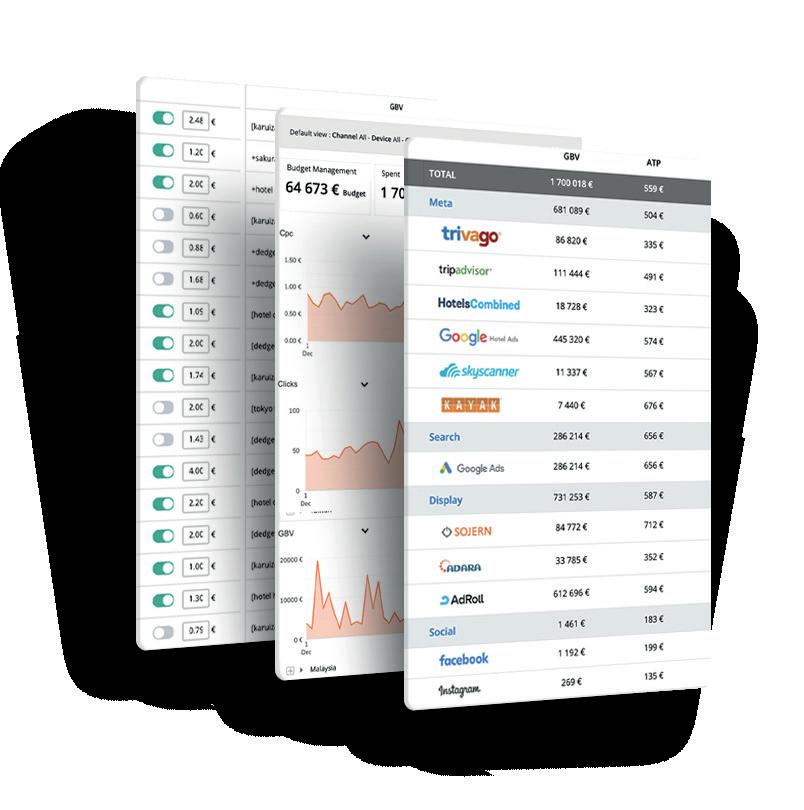
Accommodation properties operate in a highly competitive industry, and it is essential for these businesses to maximise their revenue and profitability to thrive and improve asset value. To achieve this goal, they need to adopt effective strategies that can help them increase their top-line revenue while managing costs. In this article, we will discuss some commercial strategies that properties should focus on to maximise their revenue and profitability.
1Pricing Strategy: The first and most important strategy for maximising revenue is the pricing strategy. Accommodation properties should regularly evaluate their pricing structure and adjust it based on demand and seasonality. Implementing dynamic pricing strategies can help properties adjust their prices based on demand and occupancy rates. A welldesigned pricing and distribution strategy also helps to increase revenue per available room (RevPAR), occupancy rates, ADR, and profit.
2Marketing and Sales Strategy: A robust marketing and sales strategy can help properties increase their visibility and attract more guests. Properties can use a combination of digital marketing techniques, including SEO, social media marketing, and email marketing, to reach their target audience. They can also work with travel agents and a range of booking channels to increase their online presence and reach a wider audience. Costs of acquisition across all distribution channels and return on investment of all marketing campaigns must be measured and monitored.
3Customer Experience: Providing an exceptional customer experience across all touch points is crucial for attracting and retaining guests. Accommodation properties can invest in customer service training for their staff, focus on personalised guest experiences and offers, and analyse customer feedback and reviews to improve their guests’ experience. Customer reviews are powerful and influence property value perception which impacts your pricing. So often I see guest reviews flag that your property lacks value for money. Even if you think it does not, other customers searching are swayed heavily by this review, so take notice.
4Revenue Management: Revenue management strategies involve optimising revenue streams by managing inventory availability, room rates and occupancy levels in real-time for all market segments across a range of distribution channels. Properties can implement techniques such as upselling and attributebased selling to maximise customer spend. Allowing customers to curate their stay based on their needs and wants also enhances their experience and perceived value. Automated forecasting solutions that predict demand, draw on a broad range of data sources, and have the capability to re-forecast multiple times a day to adjust pricing are beneficial for your best chance of success. Forecasting with accuracy is a major driver of business growth, underpins the success of commercial strategies and the profitability of the entire property. Do not contribute to the shortfall in industry talent by overlooking the value skilled forecasters can bring to your business, and especially those that are excellent communicators and leaders too.
continued page 10
A great analyst constantly monitors, measures, and critically analyses a wide variety of data sources and trends to avoid ever having to claim

“In hindsight...”
Melissa Kalan Founder & CEO, ARMA
5Cost Management: While increasing revenue is important, managing costs is equally essential. Accommodation operators should regularly evaluate their costs and identify areas where they can reduce expenses. This can include implementing energyefficient systems, reducing food and beverage costs balanced with a focus on the contribution margin of menu items, outsourcing non-core activities and improving forecasting accuracy.
6Diversification: Diversifying revenue streams can also help increase revenue and profitability. Accommodation properties can generate additional revenue by offering additional services they may not offer onsite by tapping into an eco-system of local providers. Adding services can also help to differentiate a property from its competitors and increase its value perception.
Emerging trends are:
1Sustainability: This is a growing trend in the hospitality industry. Guests are becoming increasingly conscious of their environmental impact and are seeking sustainable options. Properties can reduce their carbon footprint by implementing sustainable practices like energy-efficient systems, recycling programs, and sourcing local products. Those that embrace sustainability can differentiate themselves from competitors and appeal to eco-conscious guests. For corporate properties, the impact of sustainability
targets on this segment, coupled with a forced and recent conditioning behaviour of servicing clients remotely, along with the cost saving benefits of lower travel spend is something to monitor closely.
2Technology: Properties can use technology to improve the guest experience, streamline operations and increase revenue. Mobile check-in and keyless entry can enhance the guest experience, while data analytics and artificial intelligence can help operators better understand their guests and predict their needs. Skilled leaders capable of interpreting insights from numerous sources of data and with the experience and critical thinking skills to know when and how to react and when not to, vastly improves your commercial capabilities.
Accommodation operators must continuously evaluate and adjust their revenue and profitgenerating levers to stay competitive in the everchanging market and this requires a combination of strategies. Additionally, emerging trends like sustainability and technology, including artificial intelligence will impact the hospitality industry and require properties to adapt to stay competitive.
 ©Melissa Kalan I www.arma-revenuemanagement.com
©Melissa Kalan I www.arma-revenuemanagement.com
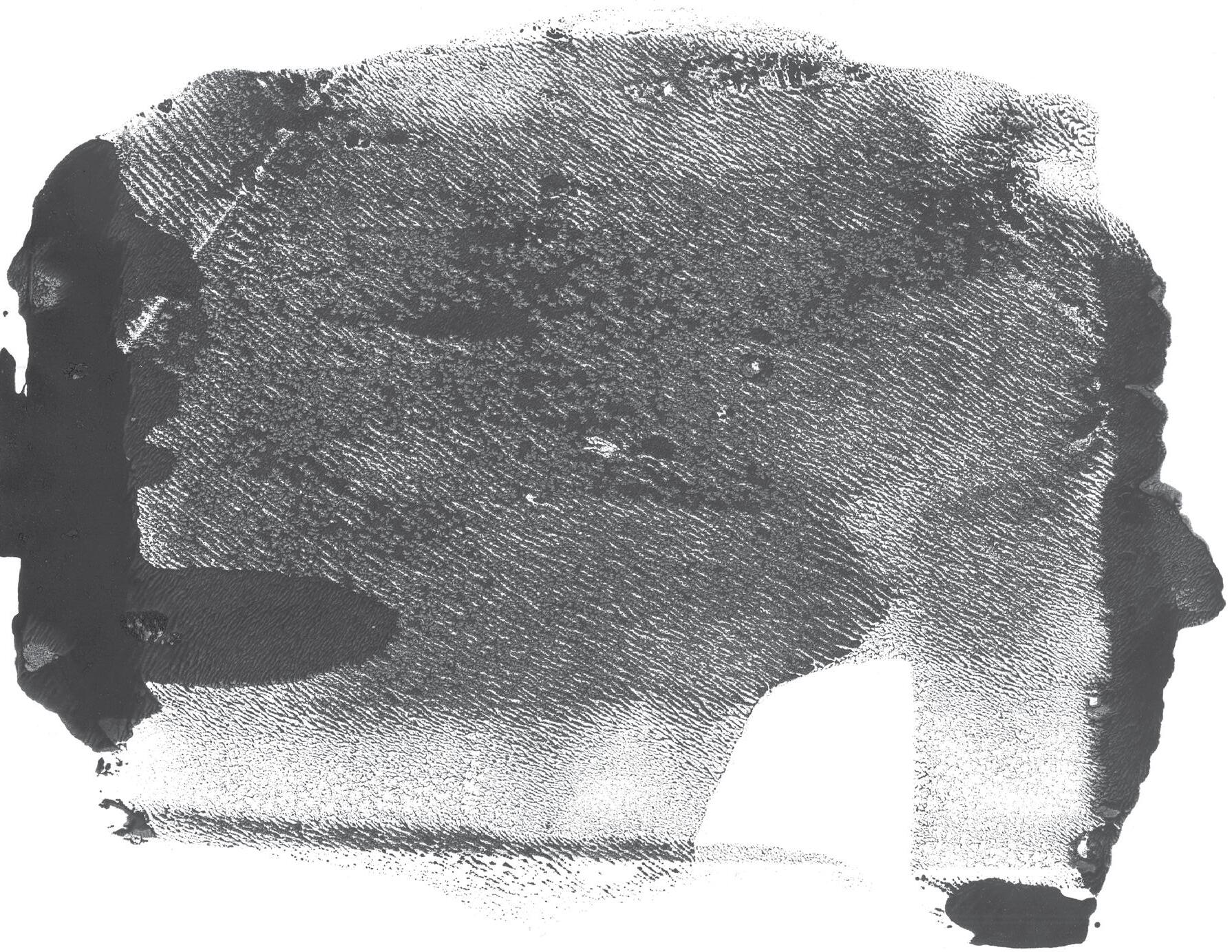





Globally, cashless payments are set to increase by more than 80% to almost 1.9 trillion transactions from 2020 to 2025. Moreover, an increasing proportion of these payments are taking place online.
Businesses are accepting alternative payment methods, and consumers are expecting them when booking hotels as well. But is the hotel industry ready to meet these demands?
For instance, one-third of hotels’ direct bookings are from mobile, but the conversion rate is 50% lower than bookings made on desktop.* The most commonly cited reason for cart abandonment is that the payment process is too complicated and needs to be simplified.
To increase conversion, hotels must offer diverse payment options, provide a frictionless payment experience, and simplify the online booking process, ultimately attracting more travellers and capturing more bookings. Hoteliers can start by understanding the most popular online payment methods available today.
Currently, there are several online payment methods, but ultimately, it’s challenging for hotels to accommodate the diverse payment methods. Hotels do not necessarily need to accept the latest payment types; however, it’s important to adjust to the preferences of guests and target markets as payment methods vary by country and region with its networks and regulations.
Moreover, payment information is often scattered across multiple systems, requiring manual processing, reporting and reconciliation. This leads to inefficiencies and human error and can expose the hotel to data breaches, fraud, and chargebacks. Resolving technical issues and payment disputes can be especially challenging.
Here are a few things to know about hotel payment methods:
Consumer payment behaviour is changing, here’s how hotels can capture more bookings.
Many hotels are moving to a centralised payment management system, such as D-EDGE Pay, that integrates a payment gateway with the Central Reservation System (CRS), allowing hotel staff to manage reservations and payments in one platform.
With the right payment gateway, hotels can seamlessly accept a broad range of payment types and automate many of the tasks related to verification and reporting. As a result, guests are assured a secure and fast booking experience regardless of the payment method or online booking channel they use – website, OTA or central reservations and regardless of the device they use: mobile or desktop.
As consumer payment behaviour evolves, hotels that adapt quickly will reach more travellers, increase conversion rates, and provide guests and team members with an elevated payment experience from booking to departure.

Find out more about D-EDGE payment solutions.


As a large majority of hotels have adopted some sort of dynamic pricing for their rooms, the next evolution of revenue management is moving beyond rooms, and many leaders have adopted total revenue management strategies for a more holistic approach.
One area that is ripe for innovation is F&B Revenue Management, and hotels are adopting the same principles and techniques that apply to room revenue management in their various F&B outlets, including full-service restaurants, bars, coffee shops and grab-and-go marketplaces.
F&B revenue management techniques largely focus on dynamic pricing, or adjusting the prices of menu items based on customer demand; and menu engineering, or adjusting the menu offerings to maximise profits.
To unpack F&B dynamic pricing, let’s identify four different “fences” that could influence dynamic price changes at your hotel F&B outlet:
1. Time of day. Prices may vary depending on the time of day or meal period, such as breakfast, lunch, dinner or happy hour.
2. Day of the week. Prices could potentially be higher on weekends or during peak times.
3. Portion sizes. Prices may also vary depending on the portion sizes offered, with larger portions typically costing more.
4. Location in the restaurant. Items may be priced differently depending on where they are located on the menu or where they are served within the restaurant, such as at the bar or in a private dining room.
A recent National Restaurant Association report on the State of the Restaurant Industry 2023 addressed
dynamic pricing in restaurants. It found that 79% of consumers are favorable or somewhat favorable towards variable pricing. Just over 70% of consumers reported they would order smaller-sized portions if the price was lower, and nearly 80% of consumers would be favorable towards discounts on lower demand days and times.
“Consumers are fine with variable pricing when done in a consumer-friendly way,” writes Cornell University Professor Emeritus Sherri Kimes. “This means offering value to the consumer. It doesn’t mean discounting all the time. If restaurants offer lower prices during low demand times, it also means that restaurants can charge higher prices during other periods.”
The key to F&B revenue management is using data to analyse guest demand and purchase behaviour. Data can also help you identify which items contribute to the highest average checks, which employees are skilled at tasks like upselling, and which menu items (or bottles of wine, for example) drive the most to the bottom line.
With some basic practices, you can improve performance in several areas, including traffic (covers), sales (average check), and service (improved reputation and guest satisfaction). Access to structured data and intuitive visualisation across these outlets will allow you to make more profitable decisions.
For more information on how you can elevate your F&B revenue management practices, please visit www.intouchdata.com
“
Consumers are fine with variable pricing when done in a consumer-friendly way



Rising operating costs, the continued challenges of changes in demand, and escalating distribution fees mean that hotel operators are looking even closer at their bottom line than ever before. Measuring total profitability, and not just rooms revenue, is the new remit of a hotel revenue manager.
Room revenue only tells you how much money is coming into your hotel. It ignores operational efficiency and how much money a hotel is spending to run the entire operation.
When analyzing hotel performance, Revenue Managers should think of themselves as Profit Managers, because they are in a unique position to directly impact and attract high-value, loyal customers and focus on net cash generated and return on investment (ROI).
To do this they must implement a dynamic revenue strategy, one that considers the following:
Hotels can boost revenue and profit by focusing on ancillary operations within the hotel, such as food and beverage, meetings and conferences, golf, spa, and parking facilities.

Total guest value comprises the revenue a customer brings in from all profit centers, less all costs associated with that customer, including package and acquisition costs.
By understanding channel costs, like commission and transaction fees, Revenue Teams can start creating real strategies and stop treating all channels as equal.
In addition, watching cancellation trends can be an effective strategy.
Ultimately, Revenue Teams should know which channels are the most profitable and how to maximize their return on investment.
Creating and delivering a strong guest experience is at the heart of running a profitable hotel. By knowing your guest, you can build internal sales strategies that boost guest spending. To see a fuller return on investment you need to give the guests the services they want. In the long run, you will profit from loyalty programs with extended length of stay (LoS) and repeat customers.
If hoteliers want a full picture of profitability, the smart move is to monitor more comprehensive metrics, such as TRevPAR and NetRevPAR.
6Unify
Drive strategy with a unified marketing and profit approach. Run promotions that are targeted at bringing in the highest value customers and create sales incentive programs that create opportunities for upsells in the purchase process and on-property.
Discover more about boosting Total Profitability at your hotel. Download the latest Duetto eBook, How To Boost Your Hotel’s Total Profitability for free today.
ARMA Member
Annual Member
The Australian Revenue Management Association (ARMA) is a professional association that focuses on upskilling the accommodation industry in revenue and yield management.
ARMA Affiliate - Level 1

Certificate of Revenue Management Foundations (CRMF)
The purpose of ARMA is to provide education, resources, and networking opportunities to help industry professionals develop the skills and knowledge needed to maximise revenue and profit potential.
ARMA Associate - Level 2
Advanced Certificate of Revenue Management (ACRM)
ARMA Fellow - Level 3
By promoting best practices and providing ongoing training and support, ARMA is helping to raise the standard of revenue management across the industry. Through its core focus on upskilling, ARMA is empowering accommodation operators to make data-driven decisions that drive growth and success in an increasingly competitive marketplace.
Master of Revenue Management Certificate (MCRM / ARMAF)
Graduate Certificate of Revenue Management (GCRM)
The ARMA Professional Membership Framework facilitates the professional growth and development of both emerging and experienced revenue management professionals, enabling them to make well-informed decisions about their career trajectories. This program is designed to assist individuals in identifying the competencies they need to acquire as they advance through various stages of their career.
The ARMA Professional Membership Framework allows emerging and experienced revenue management professionals to make informed decisions about their future career direction, and aids them in identifying what competencies they need to develop and progress through each stage of their career
For employers, ensuring uniformity in the experience level, knowledge, and skills required to support individuals in senior leadership positions or entry-level roles is an essential component of effective training programs.
The ARMA Professional Membership Framework provides such assurance and imbues employers with the confidence that the quality of training, learning outcomes, and skill level consistency are maintained, which they can then leverage to develop their own internal programs.
A common understanding of, and consistency in what level of experience, knowledge, and skills are required to best support a senior leader or commercial strategy role or an entry-level role is a useful reference for employers and provides confidence in training quality and skill level consistency of which the employer can then build upon.
Moreover, the ARMA Professional Membership Framework provides a highly effective educational pathway with a strong focus on continuous professional development. It also recognises the exceptional skills and contributions of talented professionals who drive revenue and profits for hospitality and tourism assets at every stage of their learning and development.
The ARMA Professional Membership Framework provides an education pathway with a high focus on continued professional development and recognising the talented professionals that drive revenue and profit for hospitality assets.
By creating a culture of excellence within the industry, the framework enhances the reputation of the industry and promotes the advancement of its talented workforce.
The framework benefits both the employer and employee and we are confident that all ARMA trained professionals will derive enormous benefit from this framework.
"Continued
Demand for skilled revenue management talent is on the rise, however, positions are difficult to fill across the accommodation industry. While this is a good problem for talented professionals seeking employment – the big question is, “what has happened to a lot of our industry’s talent?”
In 2014, I wrote about both ends of the spectrum in relation to the revenue management (RM) talent conundrum. On the one hand, back then, we were starting to see a dynamic cultural shift from a rooms division and mostly reservations function to a recognised and critical commercial business discipline in its own right. At the same time, many properties were still without a dedicated and trained professional skilled at analysing and optimising the perishable assets they managed.
Revenue Management is an integral commercial business function that applies to all businesses (large or small) that sell a perishable asset. This can include accommodation rooms, conference space, dining space, car parking, airline seats, theatre seats, stadium seats, rounds of golf, and cruise ship cabins. Historically, there have been sub-optimal internal reporting structures, a lack of understanding of the value the skill set can deliver, limited career pathways, low investment in training, and remuneration challenges. Without the correct underpinning support mechanisms and operating framework for these roles, the talent pool begins to reduce, burn-out occurs, and opportunities elsewhere become more appealing.
Fast forward to the present day, opportunities elsewhere have risen in recent years as other industries become more advanced or have caught up with integrating an RM culture into their organisations. Many such organisations looked for existing talent outside of their traditional hiring pipelines.
Further, corporate entities such as OTAs have secured skilled accommodation revenue management talent over the years, and opportunities also increased across the holiday park sector, consulting firms, industry tech companies, airlines, transport, and storage. More recently, opportunities have also increased across asset management companies.
The advancement of technology also led to the increased availability of remote working opportunities and the ability to work from home. This was strengthened further during the pandemic.
Discussions across some industry circles also point towards the increasing trend over the years of clustering revenue management roles as one possible contributing factor to a leaner talent pool. Cluster roles, if structured well, can bring increased operating efficiencies. They can also present challenges for the individual property who feel they may not be getting their fair share of attention, time, and focus. Further, cluster roles tend to remove the focus on RM off property, leading to onsite staff becoming less exposed to the discipline, and who could have developed an interest in this area if RM was more visible to them.
Traditionally, pathways to senior management positions were through food and beverage and rooms division (front office) management roles, often bypassing RM talent altogether. There has been a shift over the years with more RM talent moving into General Manager positions, which has been fantastic to observe, and the emergence of broader commercial roles, Group Directors, and Chief Revenue positions.
However, these roles are still very far and few between across the wider industry.

Placing a junior to mid-management level emphasis on RM is not an ideal internal structure in most instances, nor does providing a senior role title such as “Director of RM”, without embracing the role as part of the senior leadership team, commensurable with other senior leaders. This simply does not recognise the value a well-trained RM staff member can bring to the financial performance of a property.
Such a mindset limits the benefits this discipline can offer both in terms of candidate quality and the operator’s financial performance, where revenue and profit optimisation subsequently suffer as a result. Experienced RM professionals craft and hone their skills over time and understand the value they bring to the business.
The impact of the pandemic has further diluted the RM talent pool, with many roles sadly stooddown out of necessity, including many that may have been trained and developed as part of the succession talent pipeline. This forced shift out of the industry has seen some RM talent employed in other industries where their transferable skills have been utilised in other roles, and who are now not ready or able to return as our industry emerges from the pandemic.
There is also some concern about ongoing job security, as we do not have the demand consistency with any certainty as yet, and this is likely to take some time.
There are many challenges facing the industry and many things to focus on. Staffing is a critical issue facing many sectors, not just RM talent within the accommodation industry, however, losing more and more skilled revenue management talent is not ideal for an industry attempting to re-establish itself postpandemic.
A couple of interim suggestions might be to consider offering roles on a contractual basis until such time that stability returns with some certainty. Or, consider hiring a candidate remotely, at least as a short-term measure, to ensure you are not missing out on capturing opportunities until you find a suitable candidate. Furthermore, review employment policies and consider what may be a deterrent moving forward compared to other job opportunities and their employment terms available in the market. This should also include a review of your work from home and/or hybrid working conditions, where possible.
Finally, train your people! The Australian Revenue Management Association has been serving the industry for over a decade with a dedicated focus on upskilling industry professionals in this critical commercial discipline and providing quality education pathways for employers.
©Melissa Kalan I www.arma-revenuemanagement.com



Number of responses: 324, based in Australia






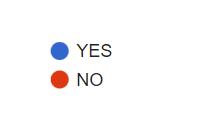





How many years have you worked in RM?
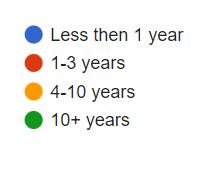
Would you hire RM talent outside of accommodation?
What level of position did you achieve?
Do you feel current salaries are competitive and reflective of the value RM brings?
Are you currently employed in RM?
Do you think the trend towards cluster roles leaned out the talent pool?

If no what are you not working in RM?
I was stood down and have now found employment out of the industry
I voluntarily left to seek work outside of hospitality
I want to work in RM again, however, salary is an issue
What are your roadblocks to hiring staff?
Lack of candidates with real practical experience
Candidate salary concerns
Do you think career path options are still limited for RM in accommodation?
Where do you think the talent pool is most lean in RM?
Rev+ is our revenue management and performance tool that, at no additional cost, delivers detailed, real-time pricing, occupancy, and demand insights in an easy-to-use and intuitive interface to help you define your pricing strategy and keep your property competitive year- round.
Pinpoint pricing opportunities to help ensure your property is not missing out on bookings
Understand your position in the market and compare yourself with similar properties

Be more efficient and save time
View aggregated data in our complementary and easy- to understand user interface
Understand when travelers are searching and plan for price changes accordingly.

Use filters like room type, refundable, or breakfast options to understand how different traveler types see your rates.
See in a combined view of aggregated data for your rates and those of your competitors for the full year.
Select your preferred data view, a detailed grid data view, or a more visual chart view and export data if needed.
Price optimization alerts See when your price may be too high or low for travelers so you can make smart pricing decisions.
Save time and stay up-to- date with email notifications so you can take action immediately to help you get the booking!

Sales opportunities exist across many operating departments and it’s essential to ensure you have a sales mindset embedded in your business culture that supports customer loyalty and new business development.
Never has it been a more important time to revisit the fundamentals of sales across your business and ensure the fabric that binds each department together seamlessly through a likeminded focus on customer loyalty and repeat business is embedded
Off the back of the COVID pandemic, our industry has been through considerable struggle with many long serving and loyal employees moving on to other industries, across most levels. The skills and knowledge gap that accommodation businesses have been left to fill has been a huge challenge, and will continue to be. As manning levels start to stabilise, we should reflect on how we’re integrating sales training as a long-term strategy to drive business growth, and there is an understanding of how each department is co-dependent in the push for long term success.
It’s important to break down the supporting roles that each department plays to support the sales function and it all begins with how to identify opportunities. For the most part staff training can be limited to the role and department which the individual operates within however this can be limiting to businesses. It’s important to illustrate to staff through training and onboarding how the sales cycle works.
Building a culture of curiosity across all key touch points in your business is an essential part of developing questions that can often uncover information that will translate to repeat business for your hotel. This is where teams can assist each other with capturing the right information that converts what may have only been a one-off piece of business into a loyal and repeat customer.
On a commercial scale, your marketing department is responsible for generating demand, revenue management optimise demand and the reservations
department is ultimately responsible for converting demand. The front line of accommodation businesses which is where the servicing of demand takes place often proves to be where conversations are taking place that can ultimately feed the sales funnel and put sales teams in a better position to capture demand and covert it in to long term relationships.
Creating sales awareness is the best starting point, and by saying that we need to focus on helping our teams develop a level of commercial acumen, business sense and understanding that will put them in a better place to identify sales opportunities.
Front line guest service teams and reservations staff are often at the most advantageous touchpoints for obtaining information and data that can truly make a difference to business performance by simply asking the right questions. This realisation can be empowering for staff and help build a culture of accountability, personal and professional development.
An improvement in the quality of data is a natural secondary benefit of accurately recording the information the teams are capturing through qualified discussions with guests, which therefore helps amplify the information sales teams can access, and then put in to play proactive sales efforts.
Remembering, the conversation starts before the guest even arrives, and this is done by knowing the right questions (and answers) that your target guests are using to filter your accommodation business as a legitimate option when conducting their pre-stay online research. The best online marketing strategies for accommodation businesses are those that start the conversation early through keywords and content that is targeted specifically at what drives the needs of your target market, and ultimately gets them through the front door for you to nurture and build long term relationships.
C E R T I F I C A T E O F R E V E N U E
M A N A G E M E N T
F O U N D A T I O N S
L E V E L 1
1 0 - 1 5 H O U R S
ARMA AFFILIATE





M A S T E R O F R E V E N U E
M A N A G E M E N T
L E V E L 3
3 0 - W E E K S
ARMA FELLOW
A D V A N C E D C E R T I F I C A T E
O F R E V E N U E
M A N A G E M E N T
L E V E L 2
1 2 - W E E K S
ARMA ASSOCIATE
D A T A S C I E N T I S T
T H E S C I E N C E I N H O T E L
R E V E N U E O P T I M I S A T I O N
L E V E L 4
3 0 - H O U R S
In the dynamic and fiercely competitive realm of restaurant revenue management, harnessing the potential of measurement metrics is crucial to achieving optimal profitability. These metrics offer invaluable insights into a restaurant’s financial well-being, empowering operators to make informed, data-driven decisions. Two pivotal measures in effective revenue management are contribution margins and food cost control. In this article, we will explore these key metrics and uncover their essential role in driving restaurant success as part of your overall RM strategy.
1. Contribution Margins: At the core of revenue management lies the contribution margin, a fundamental metric that reflects the profitability of each menu item or dish. Computed by subtracting the variable costs associated with a menu item from its selling price, the contribution margin signifies the item’s contribution to covering fixed costs and generating profit. By comprehending the contribution margins of individual menu items, restaurant operators can identify high-margin items that significantly bolster overall profitability. Armed with this knowledge, operators can make strategic
decisions regarding pricing, promotions, and menu engineering strategies.
For example, a menu item with a high contribution margin indicates a greater profit per sale, enabling operators to consider higher pricing or more aggressive promotion. Conversely, a menu item with a low contribution margin warrants re-evaluation of pricing or ingredient costs. Vigilantly monitoring contribution margins empowers restaurants to optimise pricing strategies, promote high-margin items, and strategically manage menus, thus maximising profitability.
2. Food Cost Control: Directly impacting restaurant profitability, food cost control stands as a critical metric. It represents the percentage of total revenue allocated to food costs, encompassing ingredient expenses, food inventory, and waste. Effective control of food costs is imperative for managing overall expenses and safeguarding profit margins. By closely monitoring food costs and identifying areas of waste or inefficiency, operators can make necessary adjustments to optimise costs and protect profitability.
Restaurants can employ various strategies to control food costs, including inventory management, portion

control, supplier negotiation, waste reduction, and menu engineering. Maintaining accurate inventory levels prevents over-ordering or stockouts, averting higher costs or missed sales opportunities. Implementing portion control ensures precise ingredient usage, minimising waste and maximizing profitability. Negotiating favourable supplier contracts and regularly reviewing pricing assists in controlling food costs.
Moreover, a strategic menu engineering approach, as previously discussed, promotes high-margin items, and effectively manages ingredient costs.
Leveraging technology solutions, such as inventory management systems, recipe costing tools, and point-of-sale (POS) systems with integrated food cost tracking, provides real-time visibility into food costs, enabling operators to make informed decisions that are focused on profitability.
Contribution margins and food cost control emerge as indispensable measurement metrics for effective restaurant revenue management. Understanding and analysing contribution margins empowers restaurants to identify high-margin items, optimise pricing strategies, and strategically manage menus. Further, by diligently monitoring and controlling food costs, restaurants effectively manage one of their most significant expenses, safeguarding profit margins.
Employing strategies like inventory management, portion control, supplier negotiation, waste reduction, and menu engineering allows restaurants to optimize costs and ensure profitability.

Restaurant operators must regularly track and analyse these metrics, making data-driven decisions to optimise revenue and profit. Leveraging technology solutions offers real-time visibility into these metrics, empowering operators to make informed decisions. Ultimately, mastery of these measurement metrics and effective implementation of revenue management strategies contribute to the overall success of a restaurant and ensure its growth in a competitive industry.
©Melissa Kalan I www.arma-revenuemanagement.comDid you know that 1 in 3 members of the LGBTQ+ community fear judgment from hotel staff?
With more than 28 million accommodation listings in over 160,000 destinations worldwide, as well as attractions, cars and flights, Booking.com has made it their mission to make it easier for LGBTQ+ travellers to experience the world.
“At Booking.com, we believe everyone should be able to experience the world as themselves, always. Travel should ideally be all about positive experiences, adventure and enjoyment. Yet for many LGBTQ+ travellers, this can often be a very different reality, as a majority (82%) have experienced less than welcoming, or uncomfortable moments when travelling*,” says Arjan Dijk, Senior Vice President and Chief Marketing Officer at Booking.com.

Recognising the important role that properties play in providing a more inclusive experience, Booking.com began paving the way for everyone to Travel Proud with the launch of its free Proud Hospitality training programme in August 2021. More than 20,000 properties listed on Booking.com, including over 1,500 alone across Australia and New Zealand, are now being recognised for their inclusive hospitality efforts through a Travel Proud badge on
Booking.com. The badge has been awarded to accommodation partners that have completed the Travel Proud programme, a cross company training program that focuses on improving the experience the LGBTQ+ community have across the entire travel journey.

“There is still much
work to do across the industry to make welcoming experiences the norm for everyone – no matter who they love, how they identify or where they come from.” – Arjan Dijk, Senior Vice President and Chief Marketing Officer at Booking.com
Booking.com was also proud to be a major partner and exclusive digital travel provider of Sydney WorldPride where they supported two key events at Sydney WorldPride – Pride Villages and the Human Rights Conference. “In addition to celebrating the revitalization of the Australian tourism sector, our sponsorship of Sydney WorldPride is a symbol of our continued investment in supporting rainbow communities everywhere and our commitment to enable truly inclusive travel experiences in even more places around the world,” says Dijk.
If you’re interested in learning more about Travel Proud, visit https://partner.booking.com/en-gb/proudcertified.




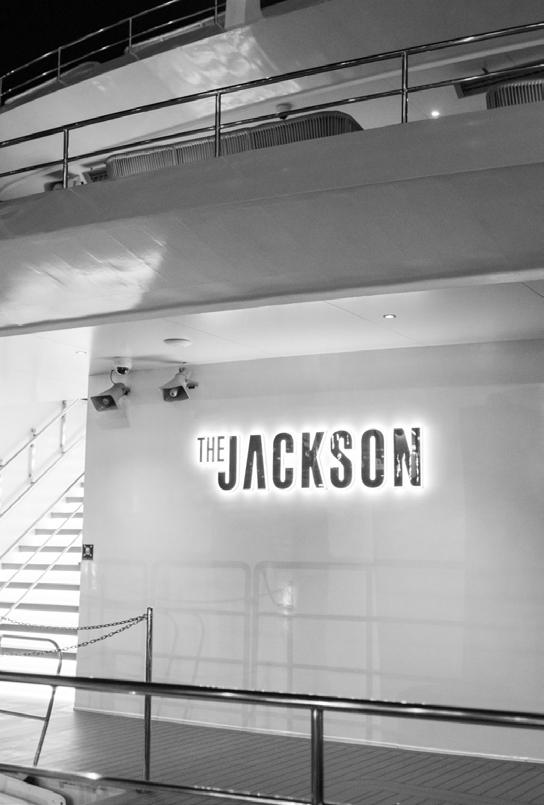





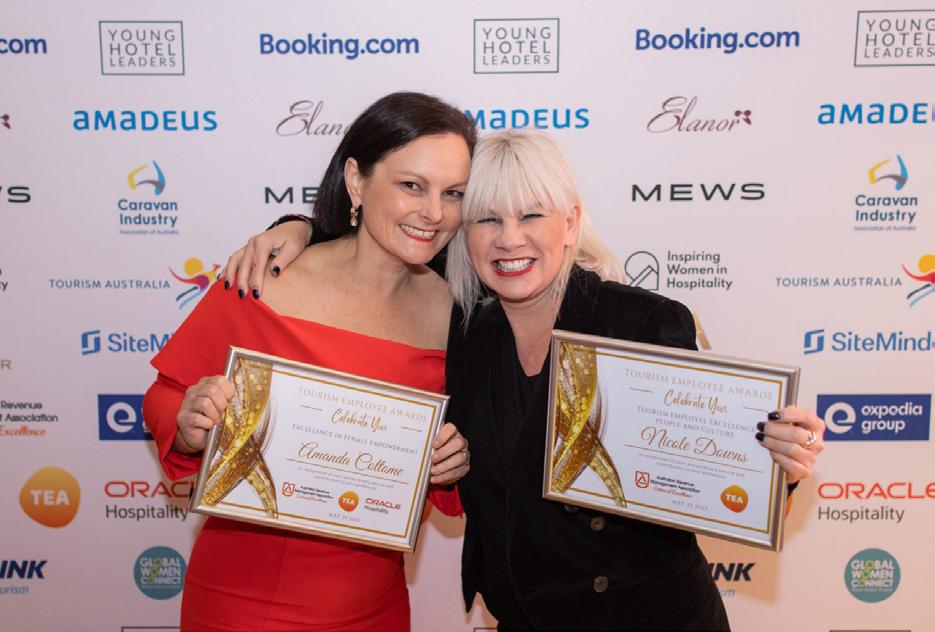
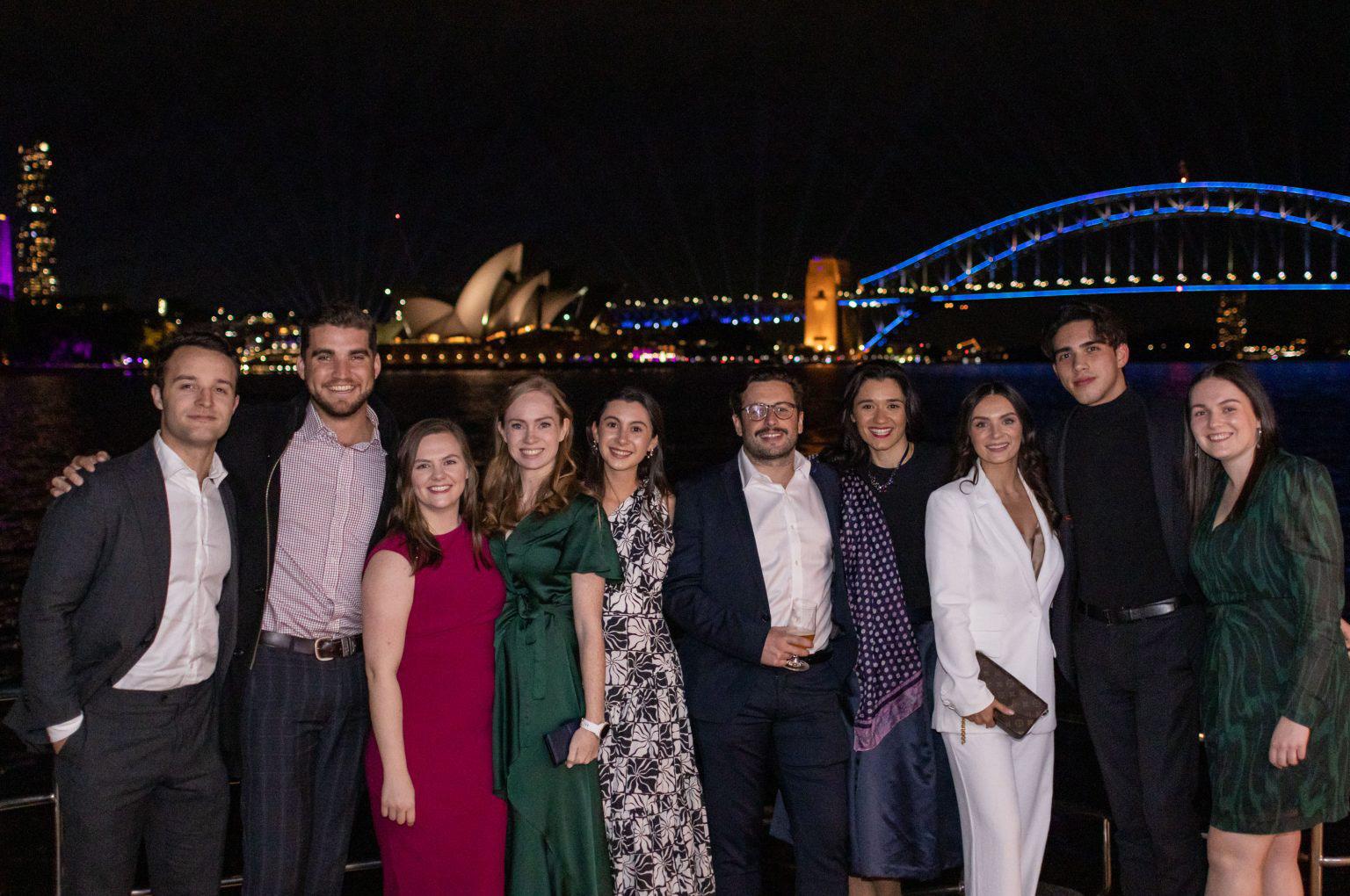






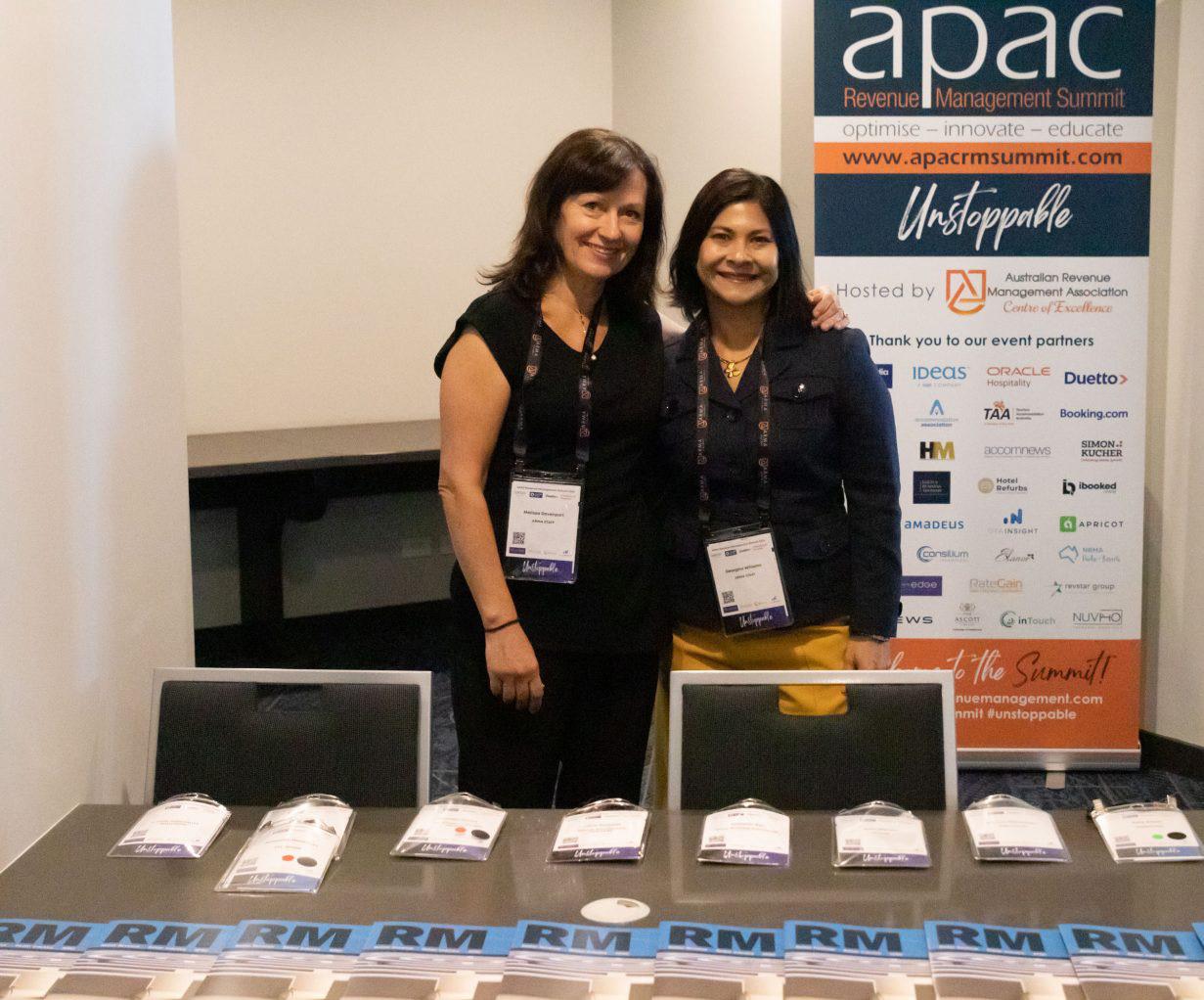
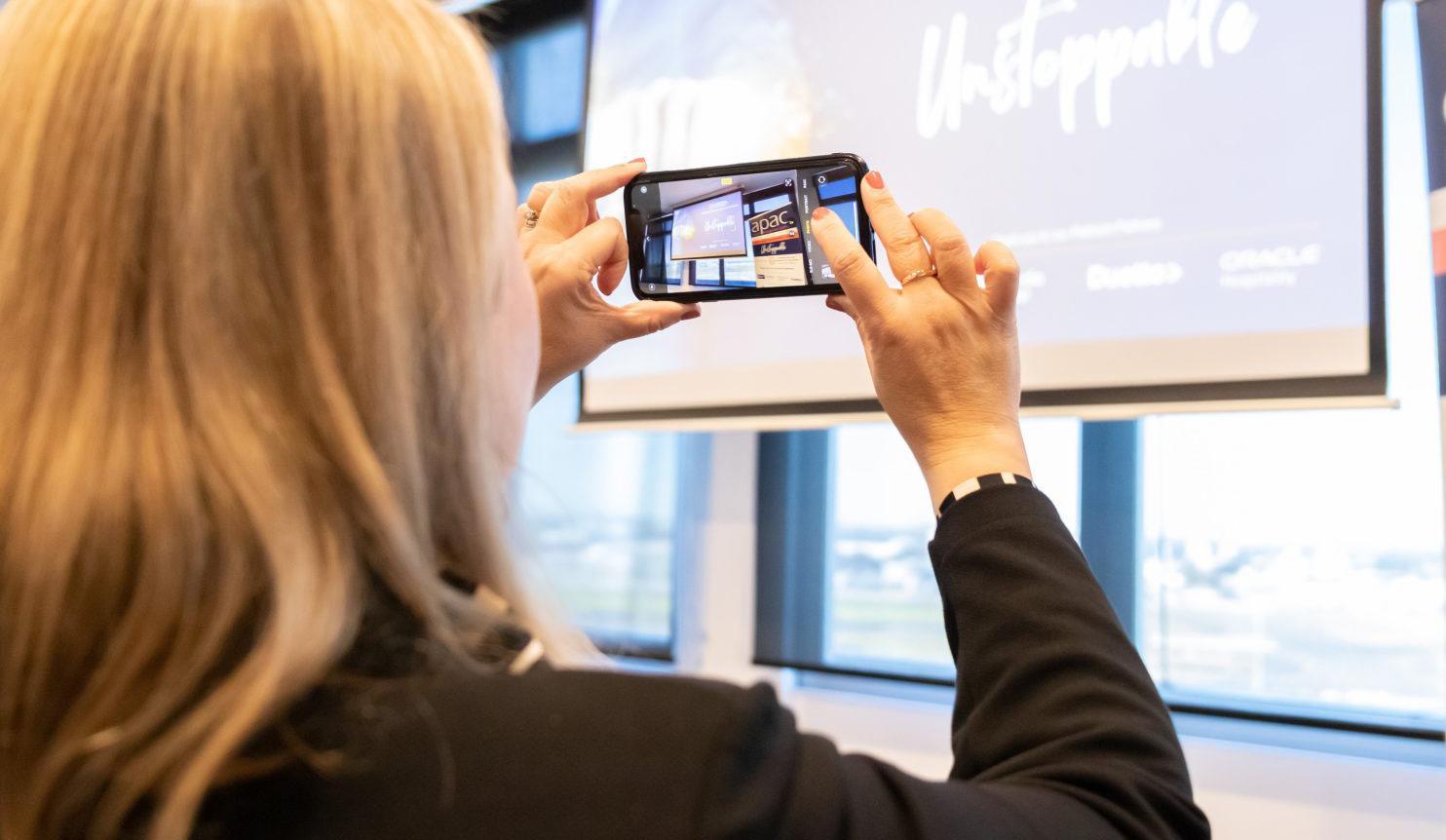

 APAC Revenue Management Summit
APAC Revenue Management Summit
Prep time: 5 minutes
1 tablespoon honey
Juice of 1 lemon
Juice of 1 navel orange
1-2 cloves garlic minced, set aside for 10 minutes
1 teaspoon fresh ginger grated
1 dash of cayenne pepper
1 dash of real sea salt
1 dash cinnamon
¼ teaspoon turmeric
Grind of black pepper
1 tablespoon Nature’s Intent Organic Apple Cider Vinegar with “The Mother”
1 tablespoon hot water
1. Mince the garlic (ideally put through a garlic press) and set aside for 10 minutes.
2. Whisk together the honey, turmeric, and hot water, until the honey is incorporated and smooth. Then you just stir in everything else and drink!
3. Add a nip of brandy or alcohol of your choice (optional)
This drink is loaded with suggested immune boosting ingredients and a tonne of antioxidants, vitamins and minerals. With everything from garlic and ginger, to lemon and orange juice, to apple cider vinegar, honey, and turmeric, it is jam packed with goodness and just especially nice particularly on a cold winter evening.

Honey is rich in antioxidants and is often used to soothe sore throats. It adds a natural sweetness to the drink.
Lemon juice is very high in vitamin C
Orange juice is naturally high in vitamin C, folate and potassium, as well as being a great source of antioxidants.
Garlic is known to boost the function of the immune system.
Ginger has a very long history of use in traditional and alternative medicine. It has been used to help digestion, reduce nausea and help fight the common cold and other illnesses, to name a few.

Cayenne has many suggested health a result of the active component, capsaicin. It can boost metabolism and lower blood pressure.
Turmeric is a great anti-inflammatory and antioxidant. Black Pepper is used to activate the curcumin in the turmeric.
Apple Cider Vinegar has been suggested to be able to help kill harmful bacteria.
Please note that we are not medical professionals, and the information contained in this recipe should not be used to diagnose, treat or prevent any disease or health illness.





